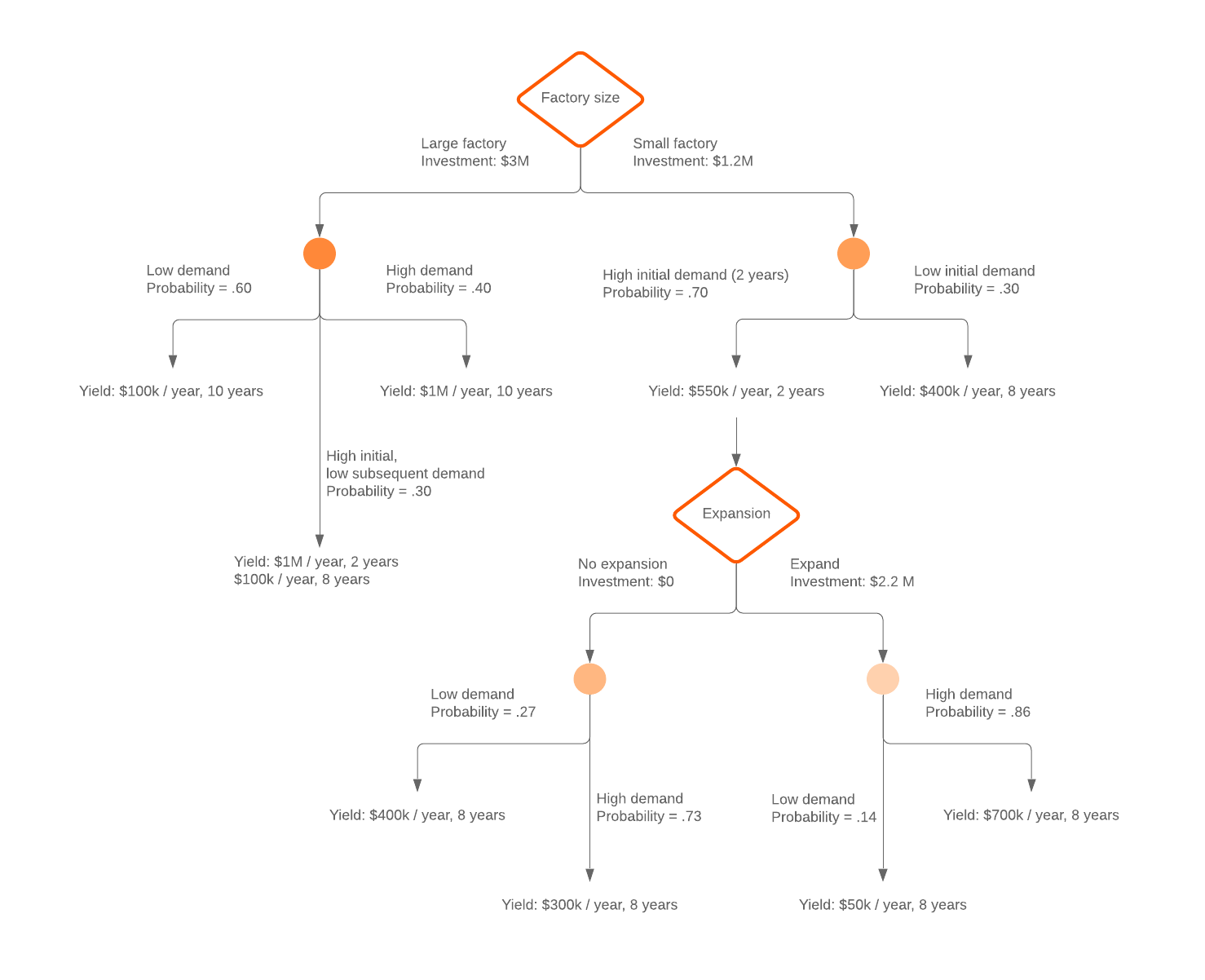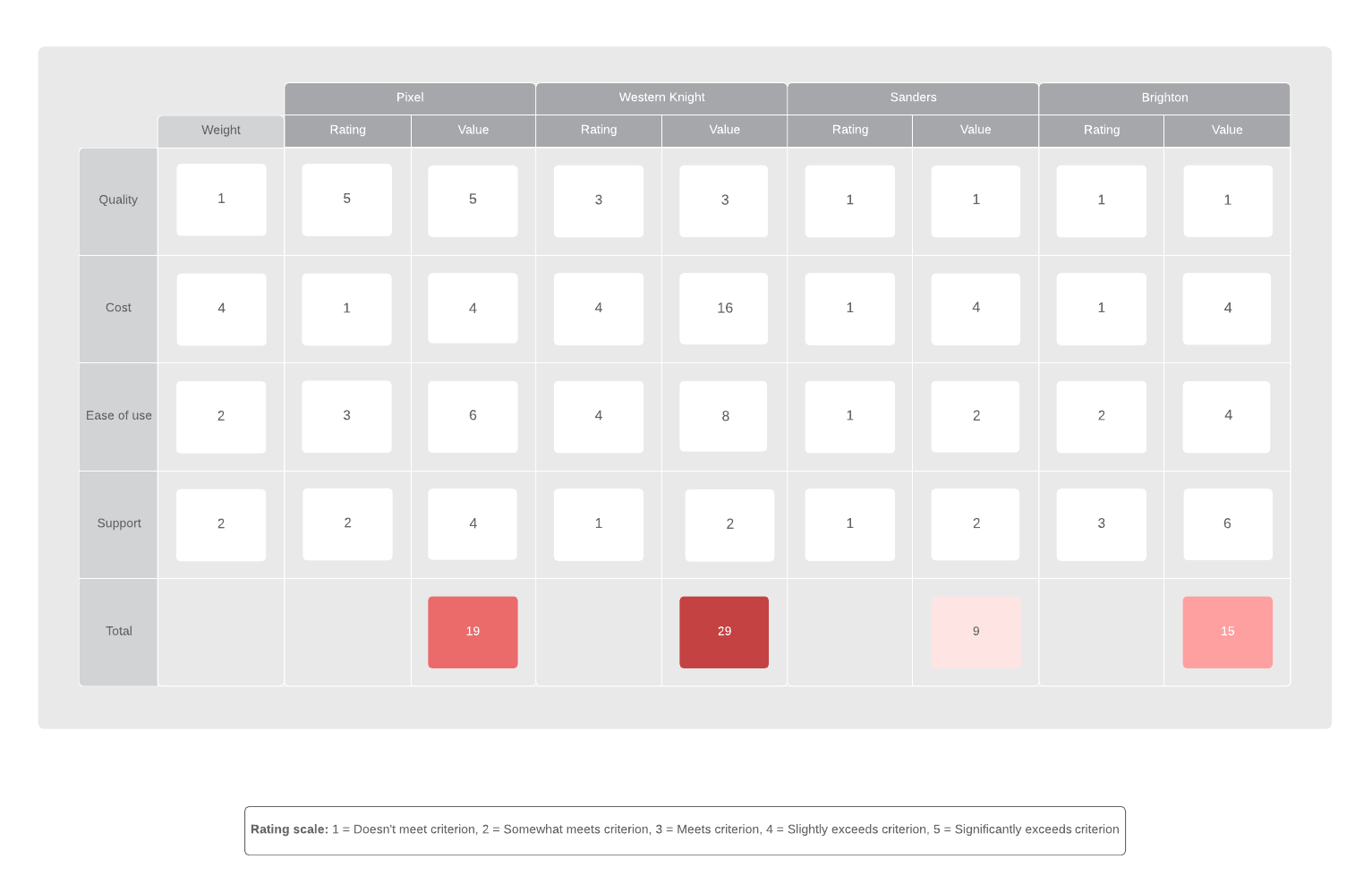
How to make a decision: Exploring 3 decision-making methods
Reading time: about 7 min
Eighty-five percent of business leaders have suffered from decision distress—regretting, feeling guilty about, or questioning a decision they made in the past year. And 74% say the number of decisions they make every day has increased 10 times over the last three years, according to a study by Oracle and Seth Stephens-Davidowitz.
In other words, people are struggling to make decisions at a time when they have to make more decisions than ever before.
Learning how to make a decision—especially when working with multiple stakeholders—is key to running a successful team or business. There are different methods of decision-making that can help you reach better decisions, faster.
In this article, we’ll discuss three decision-making methods and decision-making tools to improve your decision-making process.

1. Consensus approach
The consensus approach is one of the most common group decision-making methods. With this method of decision-making, group members discuss ideas, develop plans, and agree on a decision in the best interest of the entire group or common goal. The group is committed to finding solutions that everyone supports or can at least agree on. Working toward a consensus agreement ensures that all opinions, ideas, and concerns are taken into account. By listening to each other, the group comes up with proposals that work for everyone.
With the consensus decision-making approach, no final decision should be made against the will of an individual or a minority. Significant concerns can block proposals and prevent them from going forward. The whole group needs to work together to find solutions that address any concerns rather than ignoring minority opinions. You might want to use a mind map, decision tree, Visual Activities, or dialogue mapping to record any potential solutions you and your group come up with.

Pros of using a consensus decision-making approach
Working toward a consensus agreement gives the team a feeling of unified support. When team members are in 100 percent agreement, they are more likely to support each other and work enthusiastically to meet the goal. A good consensual decision will generally benefit everybody on the team or in the organization.
Cons of using a consensus decision-making approach
Just because the team is in agreement does not mean that the decision is necessarily the best one. Following are a couple of reasons why you may not want to use the consensus decision-making method:
Abilene paradox
In 1974, management expert Jerry B. Harvey told of a family on a hot summer afternoon in Coleman, Texas, who decides to go to Abilene, Texas, to eat dinner at a cafeteria. The cafeteria is 53 miles away, and the car has no air conditioning. When the family gets home four hours later, they each confess that they didn’t want to go in the first place. The father only suggested it because he thought everybody was bored.
This happens when each member of a group mistakenly believes that their own preferences are counter to the group’s preferences. Group members don’t express their concerns and objections due to a breakdown in communication and a fear that contrary opinions will have a detrimental effect on group status. Nobody on the team wants to “rock the boat.”
Groupthink phenomenon
Like the Abilene paradox, the Groupthink phenomenon includes team members who do not voice legitimate concerns. The difference is that, with Groupthink, team members are not motivated by fear to suppress concerns. Instead, they are motivated to ignore indicators that an action may be a bad idea in order to reach a consensus. Team members generally feel good about their decisions and believe that they are invulnerable to any potential obstacles.
2. The Vroom-Yetton decision model
Developed in 1973 by Victor Vroom and Phillip Yetton, the Vroom-Yetton decision model can help you to identify the best decision-making approach and leadership style to take, based on your current situation.
In some situations, it makes more sense for a leader to make the decisions. At other times, it’s better that the group has a say before decisions are made. By answering a series of yes or no questions, this decision-making technique helps you to determine which leadership style to take.

3 important decision-making factors
The management style and group participation needed to make a decision are influenced by these three factors:
- Quality of the decision: How much impact will the decision have and how important it is to find the right solution? The higher the decision’s quality, the more people need to be involved in the decision process.
- Involvement and collaboration: How important it is that everyone in the team agrees to the decision? The degree of participation is raised or lowered depending on the importance.
- Time constraints: How much time do you have to make the decision? A little bit of time may require an executive decision. More time allows for more group participation.
5 decision-making styles
This model identifies five situational leadership styles, outlined below.
| Leadership Styles | Description |
|---|---|
| Autocratic (A1) | The leader makes a decision based on information that is readily available. |
| Autocratic (A2) | The leader collects information from team members, then makes the decision alone based on the information collected. The decision may or may not be shared with the group. |
| Consultative (C1) | The leader consults with team members individually, asking for their ideas and suggestions. The team does not meet together. The leader makes a decision based on individual input. |
| Consultative (C2) | The team meets together and the leader seeks opinions and suggestions. The leader makes the decision alone based on the input from the group. |
| Collaborative (G2) | The team meets together to discuss and brainstorm. The team collectively makes the decision. The leader ensures that everybody agrees on the decision. |
Yes or no questions
The Vroom-Yetton model includes yes/no questions that you need to answer to find the best decision method for your situation. As you answer the questions, you work through a decision tree until you arrive at the code that corresponds to the leadership style described above.
- Is the quality of the decision important?
- Is team commitment to the decision important?
- Do you have enough information to make the decision on your own?
- Is the problem well structured?
- If you were to make the decision yourself, would the team support it?
- Does the team share organizational goals?
- Is it likely that the decision will cause conflict among team members?
The Vroom-Yetton model is very flexible with respect to the choices a leader can make, but it does not take into account individual personalities or biases. While the process is structured, the questions asked may not be specific enough to reach the ideal decision-making style.
3. Kepner-Tregoe Matrix
Developed by Charles H. Kepner and Benjamin B. Tregoe in the 60s, the Kepner-Tregoe Matrix is a structured decision-making methodology for gathering, prioritizing, and evaluating information. This decision-making method emphasizes rational thinking over creative thinking.
An important aspect of this method of business decision making is risk assessment and prioritization. The idea is not to find a perfect solution. Instead, the matrix helps you find the best possible choice among several alternatives to reach a specific goal. It is described as a way to limit conscious and unconscious biases in order to reach unbiased decisions.

There are four basic steps when using the Kepner-Tregoe decision matrix:
- Appraise the situation. This step is used to clarify the situation, outline concerns, and choose a direction.
- Analyze the problem. Define the problem and determine its root cause.
- Analyze the decision. Identify various alternatives and assess the risk of each one.
- Analyze potential problems. Anticipate future potential problems and propose actions to minimize risks.
Following the step-by-step approach of Kepner-Tregoe allows you to use critical thinking skills when considering many possible factors that may be vital in making the decision.
How can Lucidchart help?
This article discussed only a few of the many decision-making methods available. Whatever method you choose to use, Lucidchart has the templates to help you create any type of flowchart, decision tree, mind map, or any other document you may need to help you reach your goals.

Visit our template gallery and explore hundreds of free templates!
Visit galleryAbout Lucidchart
Lucidchart, a cloud-based intelligent diagramming application, is a core component of Lucid Software's Visual Collaboration Suite. This intuitive, cloud-based solution empowers teams to collaborate in real-time to build flowcharts, mockups, UML diagrams, customer journey maps, and more. Lucidchart propels teams forward to build the future faster. Lucid is proud to serve top businesses around the world, including customers such as Google, GE, and NBC Universal, and 99% of the Fortune 500. Lucid partners with industry leaders, including Google, Atlassian, and Microsoft. Since its founding, Lucid has received numerous awards for its products, business, and workplace culture. For more information, visit lucidchart.com.
Related articles
Problem solving skills for the digital age
Problems are an inevitable part of life and work, but they are also an opportunity to think critically and find solutions. Learn the key elements of problem solving, effective problem solving approaches, and tools to help you arrive at solutions quickly.
Dialogue mapping 101: How to solve problems through visuals
Dialogue mapping is a facilitation technique used to visualize critical thinking as a group. Learn how you and your team can start dialogue mapping today to solve problems and bridge gaps in knowledge and understanding (plus get a free template!).
How to master the art of quick decision-making
In this blog post, we will uncover the importance of quick decision-making and four key tips that you can apply today.
7 steps of the decision-making process
Prevent hasty decision-making and make more educated decisions when you put a formal decision-making process in place for your business.
